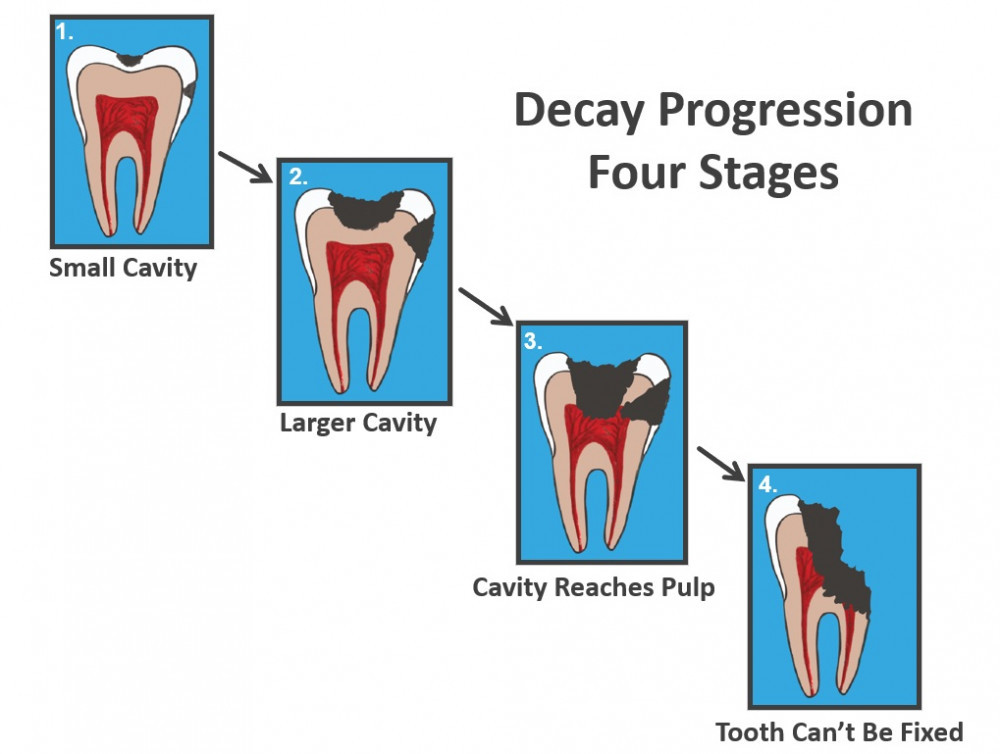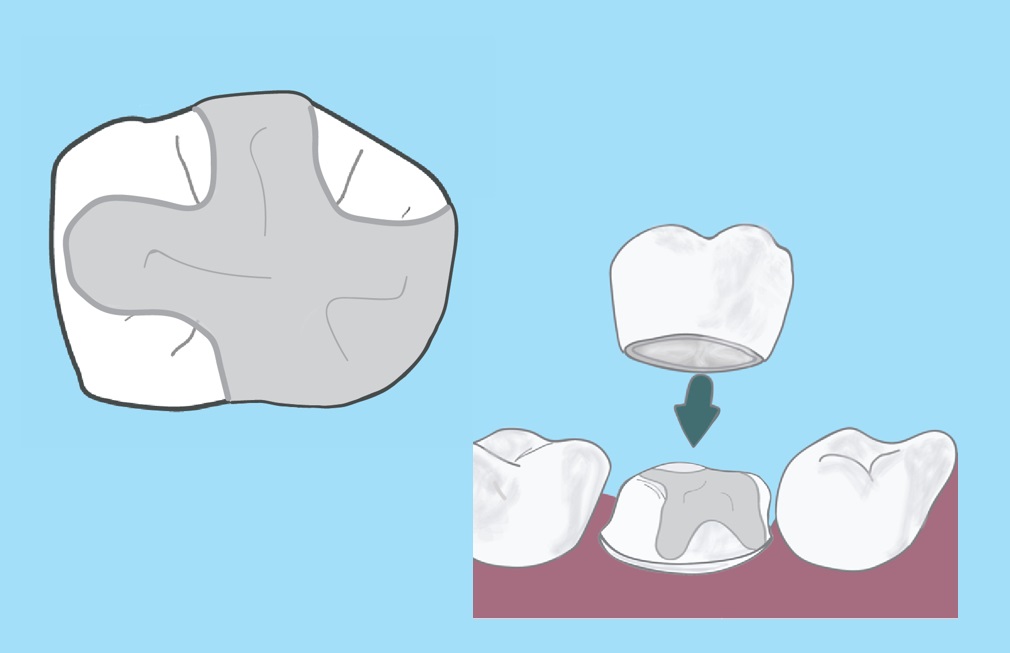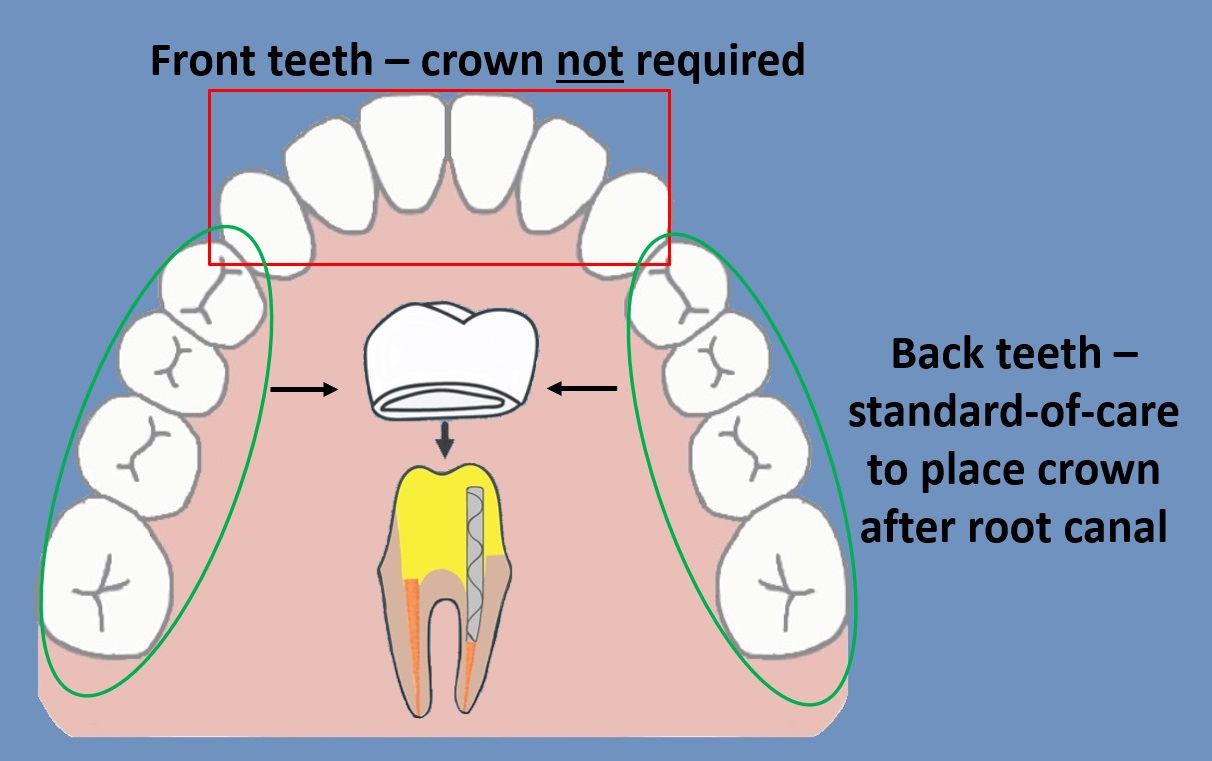If you have a dental cavity – or cavities – without dental insurance – don’t worry. There are plenty of strategies to make care affordable.
Whatever you do, don’t bury your head in the sand! That is the most expensive choice of all.
Before getting to cost-saving strategies – it’s important to understand cavities. Otherwise, you are prone to making bad decisions. I’ve been managing the outcomes of bad dental decisions for over 20 years, so trust me on this! Read my post all about cavities.
With a more thorough understanding of cavities, you will be in a much better position to self-advocate for the treatment that makes the most sense for you.
Dentists are happy to resolve your cavities, but not necessarily in a way that considers both your overall dental health and your wallet!
To minimize the financial impact of resolving your cavities, avoid these all-too-common costly mistakes!
Instead, pursue these strategies to make care more affordable.
- Take out an interest-free loan
- Consider time sensitivity when sequencing treatment
- Use low-cost clinics and pursue funding sources
- Negotiate with your dentist
- Buy insurance or a discount plan on your own
- Yes, it’s cliché – but please go for regular checkups!
- Embrace cavity prevention
Costly Mistakes
Costly Mistake 1 – Fixing One Tooth Without a Full Exam
People without dental insurance will often avoid the dentist until a toothache strikes. The toothache is often caused by a deep cavity.
Many patients in this situation request that I just focus on the tooth that is causing them pain. They think they will save money by avoiding the full exam.
Let’s assume you have a toothache on a molar tooth and that the tooth is still fixable.
The most common treatment plan for this situation is:
- root canal – code D3330 – Fair Health Consumer cost – $1,350
- build-up – code D2950 – Fair Health Consumer cost – $340
- crown – code 2740 – Fair Health Consumer cost – $1,502
The total cost to fix your tooth is: $3,192
Some dentists are happy to offer that treatment plan without a full exam and many patients will accept it.
BIG MISTAKE!
If you have a large cavity on one tooth, chances are you have other cavities too. Small cavities are typically resolved with a filling.
It’s about ten times less expensive to fix small painless cavities than it is to fix deep painful cavities. You read that right – 10X!
Sometimes You Need to Let One Go to Save the Rest
Let’s consider a scenario where a patient has ten cavities that require a filling and one very deep cavity that requires the root canal + treatment plan described above.
Fair Health Consumer average cost for a filling ≈ $300
$300 x 10 fillings needed ≈ $3,000
If spending over $3K to fix your molar precludes you from doing your fillings, then you might want to focus your dental budget on fixing your smaller cavities. You will save ten teeth for the price of one!
I hate to see patients blow their dental budget on one tooth and ignore the rest. Inevitably those other cavities will progress and eventually end up needing root canals too. By the time they do – game over. Most people can’t afford multiple root canals and crowns.
Focus on Strategic Teeth
As dentists, we like to repair all teeth that can be restored to health and function. But, this dental treatment utopia is out of reach for many people.
If you can’t afford to fix all of your teeth, you should focus on the most important teeth.
For example, if you have diseased second or third molars that could otherwise be restored, it might make sense to extract them. That way, your limited resources can be applied toward more strategic teeth. It turns out that the vast majority of people function just fine without second and third molars.
Some treatment planning compromises are more complicated than the simple examples I described. But, the important lesson here is that you need a full exam to make the best decisions. Let’s figure out what you’re dealing with. Then, we will optimize the treatment so you can achieve the best overall outcome that is within your means.
It’s a shame to have to lose a tooth because you can’t afford to fix it. But, it’s far worse to lose many teeth and/or the most important teeth.
Once you are healthy, you can replace your missing teeth if it makes sense to do so. For more information, read my post about tooth replacement options.
Costly Mistake 2 – Waiting for Insurance
Many people without dental insurance expect that one day they will get it. Sometimes they refuse needed dental work until they have it. Others who have dental insurance often refuse further treatment once they have reached their annual maximum. They want to wait until their coverage kicks back in.
Sure, those strategies can pay off… if you’re lucky! Unfortunately, very often they don’t.

The X-rays above are spaced 11 months apart. The decayed areas are outlined in yellow. This patient – let’s call her Jane – did not have insurance in January. When her cavity was discovered in January, Jane refused treatment. That was a bad decision. She could have repaired her tooth with a $300 filling.
By November Jane’s cavity had progressed significantly. She developed a horrible toothache.
Her tooth could no longer be repaired with a filling. It needed a root canal, build-up, and crown.
But at least her insurance coverage finally kicked in.
Jane had a very typical plan – a $50 deductible, 80% coverage toward a root canal and build-up, and 50% coverage toward the crown. With her insurance coverage, her co-pays required her to pay $750 out of pocket to fix her tooth.
To summarize Jane paid $750 in November with insurance.
Jane could have paid $300 in January without insurance.
She actually spent more than twice as much out-of-pocket with her insurance benefit than she would have spent without her insurance benefit if she had just had a filling placed in January.
Not to mention, the tooth itself is more compromised with additional work done to it. And, Jane missed a day of work with an excruciating toothache that she could have avoided!
Let’s reconsider this situation if Jane still did not have insurance in November. Let’s assume that she could not afford the hefty price of fixing her tooth with a root canal + build-up + crown without insurance to help her.
She decides to have her tooth extracted.
According to Fair Health Consumer, the cost of a tooth extraction is $350.
She would actually spend more money for an extraction in November than she would have spent fixing it with a simple filling in January. She spent more money to lose her tooth than she would have to keep it.
Jane is not just a hypothetical rarity.
People do this to themselves ALL. THE. TIME.
I urge you to do yourself a favor. Do not wait for insurance! It is risky to both your dental health and your bank account.
Now that you know what not to do, let’s look at some ideas to help you manage the costs of care.
Strategies to Make Care More Affordable
Strategy 1 – Take Out an Interest-Free Loan
If you need to pace yourself financially, the best way to do that is to take out an interest-free loan.
For those that qualify, medical credit cards offer interest-free loans to cover health care expenses.
Your credit history and other financial metrics will determine whether you qualify, and if so, how much you qualify for. You may or may not qualify for enough to complete your entire treatment plan. But, anything helps.
An interest-free loan might sound too good to be true. You might wonder how these companies make money. Don’t worry! They do. The dental office that accepts the card has to pay them a percentage of the treatment fee.
So, the cost is usually borne by the dentist, not the patient.
However, if you do not honor the interest-free repayment terms, these companies will charge you interest retroactively. For more information about how medical credit cards work, the potential pitfalls, and alternative funding sources, read this post.
As I have pointed out, unaddressed cavities do not go away. They just progress and become exponentially more expensive to fix.
For that reason, taking out a loan can be a great way to save money on dental care. I’m confident that Susie Orman would agree!
Strategy 2 – Consider Time Sensitivity When Sequencing Treatment
If you do not qualify for a medical credit card, or you do not qualify for enough to complete your treatment, but you still need financial pacing, then you should sequence your treatment carefully. However you do it, aim to resolve your cavities one way or another within a year.
I do not mean that you need to take care of all of your dental work in one year. I’m only referring to cavities. Strive to be cavity-free at the end of twelve months.
It’s too risky to let it go longer. Sure, some people get away with it. But why take a chance?
For more insight on how to phase all categories of dental care to reduce your costs, read my post about phasing care.
In my post about cavities, I review the following stages:
- Stage 1 – small cavities
- Stage 2 – larger, deeper cavity
- Stage 3 – cavity reaches the pulp – a root canal is needed to fix the tooth
- Stage 4 – cavity consumes too much of the tooth – it cannot be repaired and must be removed

To financially pace yourself, sequence your treatment as follows:
- Priority 1 – Pain and/or Swelling
- Priority 2 – Fix Stage 2 Cavities and Stage 3 Cavities That You Want to Repair
- Priority 3 – Extract Teeth With Stage 4 Cavities and Stage 3 Cavities Forgoing Repair
- Priority 4 – Fill Stage 1 Cavities
Priority 1 – Pain and/or Swelling
If any tooth is causing pain or swelling, that is a sign of an infection. Deep cavities – stage 3 or stage 4 – can lead to an endodontic infection. An endodontic infection is an infection of the pulp. That’s the tooth to address first. Dental infections can be dangerous – even life-threatening – if left to fester too long. Pain and swelling must be treated as soon as possible. For more details, read my post about treating dental infections.
Priority 2- Stage 2 Cavities and Stage 3 Cavities That You Want to Repair
After resolving infection and pain, treat stage 2 and stage 3 cavities. Though not ideal, stage 1 cavities and teeth planned for extraction can wait.
Stage 2
Stage 2 cavities can still be resolved with a filling. Let’s get to it ASAP while the cost is 10X less than a stage 3 cavity! We don’t want these cavities to have the opportunity to progress to stage 3 and become exponentially more expensive and often financially prohibitive to fix! Hurry hurry!
Stage 3
A Stage 3 cavity is the most expensive one to fix. It needs a root canal + build-up + (usually) a crown. But, if not addressed quickly enough, it will progress to stage 4. Once it does the tooth is no longer fixable. If you want to keep a tooth that has a stage 3 cavity, then you need to get the work done sooner than later.
However, any stage 3 cavities that you do not want to repair – as long as they are not causing pain or infection – can wait.
Crown Considerations for Stage 2 and Stage 3 Cavities
Crowns for Stage 2 Cavities
Some stage 2 cavities can be resolved with a filling only. A filling can be a perfectly acceptable long-term restoration in some cases. But, if the filling is very broad and deep, the tooth may benefit from a crown. The crown will protect the tooth from future cracks, infection, and fracture.

In this situation, when possible, I prefer to skip the huge filling and do the crown right away. A large, deep filling procedure can traumatize the pulp. Every time we drill on a tooth, the pulp is weakened. The effect is cumulative.
If we place a large, deep filling on your tooth and three years later we prepare the same tooth for a crown, the pulp may not withstand the crown preparation. It is more likely to blow up with a toothache or to die slowly. Once that happens, the tooth will need a root canal. For more insight on why this happens, read this post.
It’s best for the health of the pulp to do the drilling all at once. It’s ideal to skip the huge filling and go straight to the crown.
Despite this advantage, it is still more important to resolve your other cavities than it is to have your crown done right away. If paying for a crown on a stage 2 cavity precludes you from resolving your other cavities, then delay the crown until you resolve your cavities.
Crowns for Stage 3 Cavities
For stage 3 cavities, we can’t avoid a root canal. The decay has reached the pulp, and a root canal is required to fix your tooth. After a root canal, we do a build-up, and often a crown. To be precise, it is the standard of care to place crowns on back teeth after a root canal. But, they are not always needed on front teeth.

The crown covers and protects the tooth from fracture. It also offers a better seal on the top part of the tooth to give the root canal the best odds of success.
But crowns are expensive. If paying for a crown precludes you from treating your other cavities in an acceptable time frame, then you might ask your dentist to place a temporary – or “provisional” – crown instead of an expensive permanent crown.
I will do this for patients who need financial pacing. That way their tooth is covered and protected while we are completing other, more time-sensitive work.
I include these provisional crowns in my build-up fee. However, I expect that most dentists would charge for this service. But it will cost far less than a long-term porcelain or gold crown.
I do not like patients to wear provisional crowns for more than a year. Provisional crowns are made of a plastic material and will attract more plaque. They are also not custom-fit, so you won’t have a smooth, seamless junction between the natural tooth and the crown.
Consequently, they are harder to keep clean. But, for many patients, this is an acceptable option. Despite my objections, some of my patients have had provisional crowns for three or four years and have gotten away with it.
Priority 3 – Stage 4 Cavities and Stage 3 Cavities Forgoing Repair
From a health standpoint, it’s a compromise to delay extractions. I’d prefer to get these diseased teeth out as soon as possible. Stage 3 and 4 cavities are always at risk of pain and infection. When it will happen is impossible to predict. If it happens while you’re in the process of your other dental work, it will have to move to the top of the priority list.
But, if they’re painless and show no sign of infection, they can wait. They’re goners anyway. It’s best to save the teeth you can still save before it’s too late.
Priority 4 – Stage 1 Cavities
After stage 2, 3, and 4 cavities are resolved, then you can take care of your smaller, stage 1 cavities.
Very small cavities can be monitored at your check-up appointments. Sometimes they take two or three years to become appreciably larger. We can often delay these teeth in favor of treating your bigger cavities. That doesn’t mean you should wait that long. But, generally speaking, the smaller the cavity, the slower it goes. The pace of growth accelerates as the cavity gets larger.
Never Ideal – But, It’s the Real World
It’s not ideal to delay treatment for financial reasons. But, I’m on the dental front lines in the real world. People sometimes have to delay procedures in favor of what is most urgent. If that is the case for you it’s important to prioritize appropriately.
Strategy 3 – Use Low-Cost Clinics and Pursue Funding Sources
Free or Low-Cost Dental Clinics
Every state has non-profit dental clinics that offer services for free or at a reduced cost. They’re not a panacea. They may not offer everything you need. They may have a long waiting period. And, they may be staffed with new dental school graduates.
For some procedures, you may want a highly experienced, trusted local dentist. Nonetheless, they can be a great resource for basic services. These clinics are typically well-versed in dental extractions.
Many of the low-income patients they serve are in poor dental health. They often need teeth removed.
Non-profit clinics will have dentists experienced with extractions and they will often even have an Oral Surgeon on staff.
If you do not feel comfortable allowing their providers to do your crowns or root canals, they can at least take care of the extractions on your treatment plan. They will charge a lot less than your regular dentist. Non-profit clinics supplement their revenue with grants and fundraising. That is why they can offer such reduced fees.
Don’t worry. It’s perfectly okay to cheat on your regular dentist. Feel free to go elsewhere for certain procedures to save money!
Click here to find a free or low-cost clinic in your area.
Dental Schools
If you have a lot of time on your hands, consider getting your treatment at your local dental school. The fees are drastically reduced. Dental students are working under the strict guidance of their dental school professors. So, you can expect a quality outcome.
Just be warned – dental schools require a significant number of very long appointments. Every i is dotted and every t is crossed! If you have a full-time job, a dental school is probably not a practical choice.
Grants and Medicaid
Many states offer grants for certain populations – particularly the elderly and disabled. These programs are often posted on the state dental association’s website. Apply if you qualify.
Many people who qualify for Medicaid benefits don’t apply. Don’t be afraid to try! Some states are more generous with Medicaid dental benefits than others. But almost all will at least take care of extractions at no charge.
Strategy 4 – Negotiate with Your Dentist
As a practicing dentist, I will admit, I do not love it when patients want to negotiate fees down. But, I am usually responsive. It never hurts to ask.
Your dentist is more likely to be receptive to negotiating your fees down if you offer a win-win. Read my post for ideas on how to negotiate successfully with your dentist.
Strategy 5 – Buy Dental Insurance or a Discount Plan on Your Own
If your employer does not offer dental insurance, there are plenty of plans out there you can sign up for on your own. If you don’t feel comfortable directly negotiating with your dentist, buying a dental plan may be your best option.
Some plans offer coverage towards some procedures. But, their main advantage is their discounted fee schedule. For more information, read my post about individual dental plans.
Strategy 6 – It’s Cliché to Say – But Please go for Regular Checkups!
I had to say it! Remember, treating a small cavity is 10x less expensive than treating a cavity that reaches the pulp.
Being proactive about cavities is the difference between teeth and no teeth. Let’s imagine you have ten cavities that reach the pulp. That’s $30,000 worth of dental work! Not affordable for most. That’s usually when the white flag goes up, and we remove teeth and make dentures.
Don’t let your cavities have the chance to get that far.
Keep in mind, that most cavities do not hurt. You will not be warned of their presence by pain!
For the cavity-prone, proactive care is the name of the game.
Strategy 7 – Embrace Cavity Prevention
I cannot overstate how unfair it is. If you are getting cavities like a game of whack-a-mole, it is not your fault. People with perfect dental hygiene still get cavities!
If you get cavities every time you go to the dentist, consider products made by Carifree. They are specially formulated for the super cavity-prone.
I have no affiliate relationship with Carifree. I am recommending them because I believe in their products.
Their Treatment Kit helps change your oral chemistry to make you less cavity-prone. After six months or so of using their Treatment Kit products, you can switch to their Maintenance Kit.
These products cost more than a normal tube of toothpaste. But, if they drastically reduce the number of cavities you get, the return on investment is definitely in your favor!
The interaction between simple carbohydrates and certain species of plaque bacteria causes cavities. We all know that eating less sugar and fewer simple carbohydrates is better for our health. But, you don’t have to go to dietary extremes.
This article offers some simple tips you can follow.
Sometimes dental work can feel overwhelming. But when there’s a will to take care of it, there’s always a way. I hope some of the strategies I recommended will work for you. Please feel free to comment below to share your experience with cavities.





In all my years around the Wellness field this is the first article I have found that is so understandably thorough regarding dental health care. I recommend this article to everyone. It contains much valuable information, especially for those who may be concerned about how to handle the cost of dental care and maintenance.
Thank you Phil!